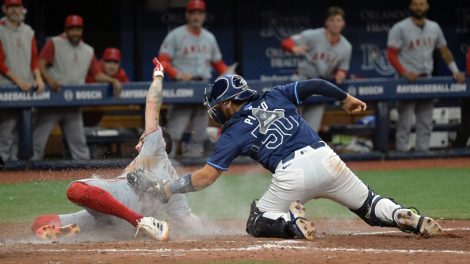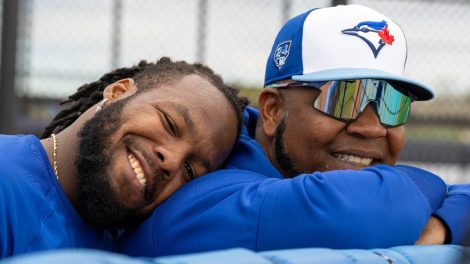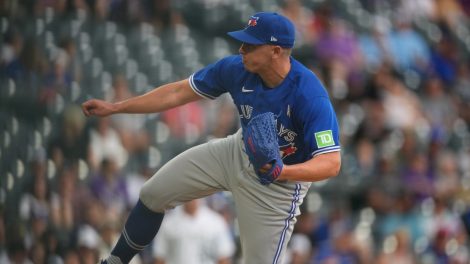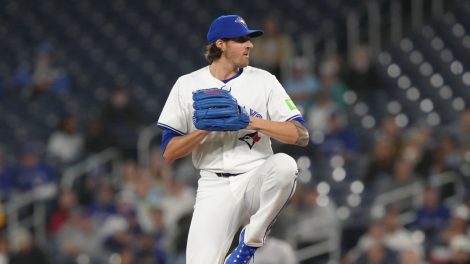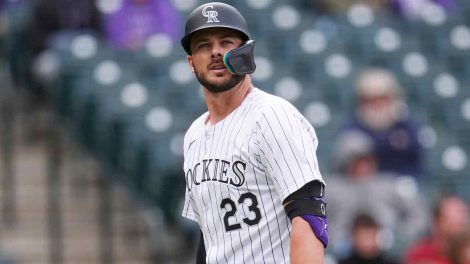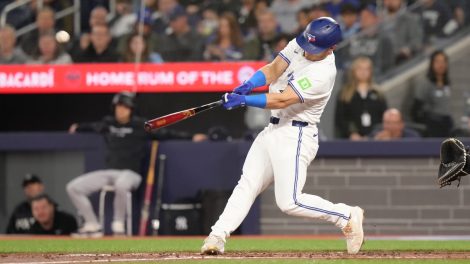• Club vs. country dilemma impacting Canada’s WBC roster
• Martin, Saunders forced to withdraw
• Freeman, Morneau headline Canadian contingent
The steady whispers in the background say the upcoming fourth edition of the World Baseball Classic may be the last and if that’s indeed the case, the issues Canada faced in constructing its roster this time around will be among the culprits in the tournament’s demise.
Missing from the 28-man team unveiled Wednesday night are Russell Martin and Michael Saunders, two players who committed to play but were forced to withdraw because of circumstances outside their control.
Martin, completely stoked to play shortstop for the national team, can’t suit up because of insurance complications related to his minor off-season knee surgery. Saunders, meanwhile, recently signed a $9 million, one-year deal with the Philadelphia Phillies and he needs to be in camp with his new team.
Combined with the previous losses for different reasons of Joey Votto, James Paxton, Jameson Taillon and Brett Lawrie, Canada once again enters the event without several of its best players, an issue that impacts both its competitiveness on the field and the overall quality of the enterprise.
Ever since the World Baseball Classic debuted in 2006, the lack of buy-in from certain players, managers, general managers and player development personnel has watered down the rosters of every club in the tournament.
For countries with deep talent pools like the United States, Japan, the Dominican Republic and Venezuela, the issue isn’t as pressing because of the wealth of options. But for countries such as Canada, which has lots of talent but not a lot of depth, the loss of each first-option player is deeply damaging.
Now, a lack of star power doesn’t have to be a death-knell at the event, Italy’s run into the second round of the 2013 tournament demonstrates that, but the Classic was designed to be an international best-on-best event.
If it isn’t, and players of all stripes continue to face the club-versus-country dilemma with nudge-nudge, wink-wink discouragements from executives or player-development staff, what sense is there in continuing an event still facing resistance within the industry?
The shame is that the World Baseball Classic concept is a fantastic one, and even with the restrictions forced upon it by the timing and rules on pitcher usage, the games are well worth watching. Players predominantly have great things to say about their experience, and many experience a let-down returning to the monotony of spring training from the high of competing for country.
[sidebar]
Tournament games also offer baseball-starved fans far more entertainment value than any Grapefruit or Cactus League game.
Yet despite the positives, players still find drawbacks in interrupting their routines to get ready to play meaningful baseball earlier than normal, teams chafe at the disruption to their preparations, and worry about a key player getting hurt accelerates the development of ulcers for executives.
Those concerns are all fair, and three tournaments in, things aren’t getting better.
For Canada, that means really digging down the depth chart to take a puncher’s chance at knocking off either the Dominican Republic or the United States, in the hopes of being one of the two teams to advance out of a first round group that also includes Colombia.
The Canadians will run with an infield of Freddie Freeman and Justin Morneau at first base, Pete Orr at second, Jonathan Malo at shortstop and Jamie Romak at third. George Kottaras and Kellin Deglan will catch, with Tyler O’Neill in left field, Dalton Pompey in centre and a platoon of Rene Tosoni, Eric Wood and Romak in right field.
That lineup should be good enough to score some runs, but probably not outlast the Americans or Dominicans in a slugfest, so a makeshift bullpen-heavy pitching staff must keep opponents in range.
Ryan Dempster and Eric Gagne are coming out of retirement and Canada needs some quality innings from them both. Dempster is under consideration for a start in one of the first-round games, while Gagne will be utilized to help lock down games.
Scott Richmond, Andrew Albers and Chris Leroux are also in the mix to start games, while a bullpen also featuring John Axford, Jim Henderson, Adam Loewen, Dustin Molleken and Scott Mathieson has the potential to shorten games.
Under modified rules for this Classic, teams can identify a designated pool of 10 pitchers from which one or two can be subbed onto the roster in subsequent rounds. The change is perfect for the United States, which can put arms like Clayton Kershaw and Madison Bumgarner on the list and ask them to parachute in for a start each in the latter rounds, should the Americans advance that far.
The Canadians aren’t going to bother, as the group is the group and the notion of asking a pitcher or two to help with the heavy lifting early only to be tossed aside down the line for someone else runs counter to the national team ethos.
Canadian players are typically close-knit. The passion with which they play and their desire to compete for one another can sometimes be an equalizer in short, cut-throat tournaments where any-given-day randomness is a real factor.
Again, see Italy in the past two tournaments.
So yeah, the Canadian roster is far from perfect, but it’s the best of what’s possible under the circumstances. Just like the World Baseball Classic, whether or not there is another.
[relatedlinks]


